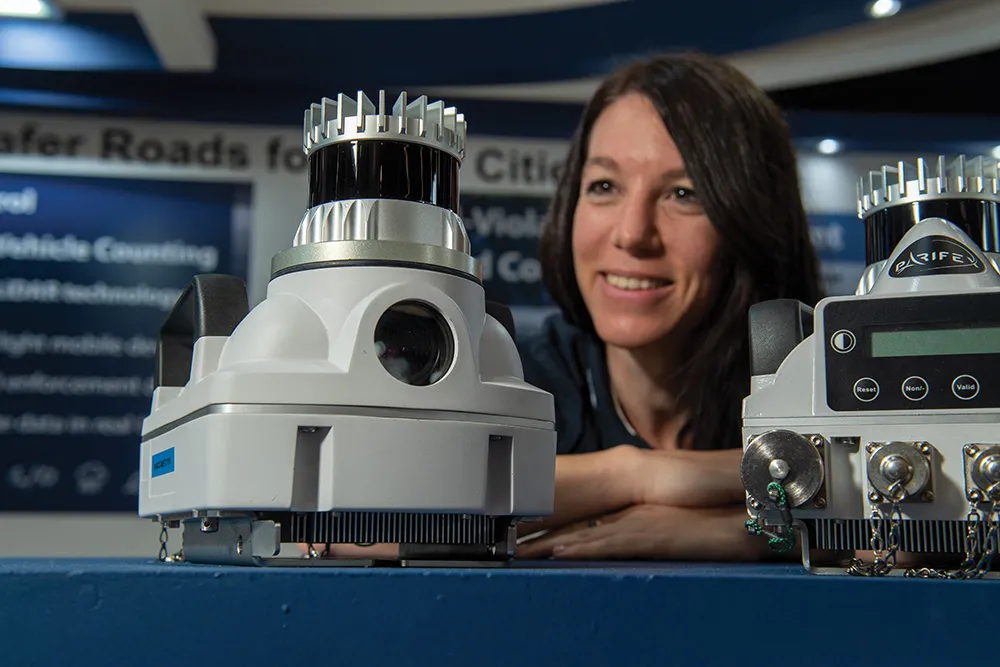
InnoSenT has developed a new high-tech radar system for intersection management and traffic monitoring: the ITR-3800.
It has a built-in full HD camera for transmitting image information.
"It offers high measurement accuracy and separation capability," said Dr Eva Maria Buchkremer, head of product management at InnoSenT.
"Even at the edges of the wide detection range, the sensor delivers outstanding performance. Thanks to the forward firing, large detection area, two systems are sufficient to see even large intersections.”
The FMCW radar uses 4D MIMO technology for high-resolution and precise detection of moving and static objects, the German manufacturer says.
It records the speed, distance, direction of movement and angular position of a wide variety of road users, such as people or cars, enabling precise positioning within the detection range and the reliable distinction of individual objects based on the three dimensions of distance, speed and angle.
The radar system provides real-time data on the current traffic situation and utilises radar tracking and object classification for applications such as detection of wrong-way drivers, broken-down vehicles, vehicles in the intersection area, length of backed-up traffic or people who would like to cross the road.
The information obtained also serves as a basis for demand-oriented traffic light control or to trigger other technical applications in road traffic.
The device has a detection range of 300m and a wide field of view of 110° x 30°, and can monitor up to 16 lanes and 128 objects simultaneously. Object classification is already possible at a distance of up to 183m.
The built-in camera provides full-HD live transmission and still images, with a range of vision of approximately 5-80m and diagonal angle of vision of 143°.
The plug-and-play system doesn't require customers to perform any development work with regard to signal processing or integration, InnoSenT says.
The ITR-3800 can systematically transmit a signal to the traffic light control system when a specific event occurs. For example, when a certain number of vehicles are waiting, the intersection is blocked, or vehicles in the dilemma zone are driving too fast to come to a safe stop.
This means the radar system can also map the function of an induction loop without interfering with the existing infrastructure.
This simplified integration and built-in camera reduce the sources of errors and work during commissioning, installation, and evaluation, the firm insists. The additional attachment of a traffic camera as usual is no longer necessary.
The device weighs less than 1 kg and measures only 270 mm x 102 mm x 37 mm. The radar is equipped with an IP67 standard housing and operates reliably regardless of light and weather conditions.
The operating temperature of the radar component is between -40 and +80 °C. The radar system can be operated with 24 V or 48 V voltage supply.










